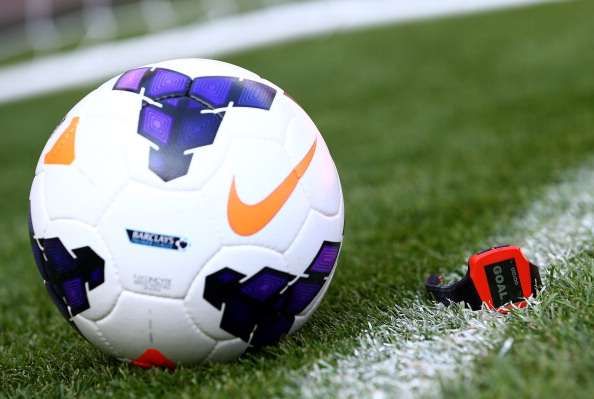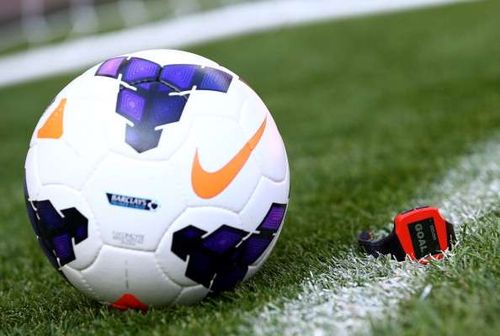
Football’s tryst with technology

The era of Neo-Luddism it seems has come to an end in football. Neo-Luddism is more about opposition to modern technology and is more of a retrograde move by the so-called affiliated groups who believe that technology should revert to a more primitive level.
Luddism is, in fact, the opposite of technology, and the term was derived from a British industrial protest which began 200 years ago when bands of English workers destroyed the machinery in the woollen mills believing that it was threatening their jobs.
In football though, there hasn’t been such drastic actions of violence, but when one thinks of the threats received by certain referees over the course of their careers over a debatable call, then it is time for the regulatory authorities in football to reconsider their position
On 1st September 2016, as France took on Italy in an international friendly, it was the first time that the existing technology of video replay was used for the first time in football, which was approved by football’s governing body, FIFA. Over the years, journalists, fanzines, referees and even players have advocated for the use of video replay technology in football.
There is a host of sports which have incorporated video technology. Sports such as hockey, tennis and cricket in recent years have made use of the technology to get more precise results and also to ensure that a certain extent of fairness is achieved.
Football being the world’s most watched sport and the amount of revenue attached to it, has indeed a bigger responsibility to its fans which has led to the new President, Giovanni Infantino to consider this move.
The nature of the video technology that was on display on the night was different from the usual ones. In order to not affect the flow of the game, a team of Video Assistant Referee (VAR) was available to the match referee Bjorn Kuipers.
Now this video team, had access to replays and in certain instances, they did intervene by assisting the match referee with yellow card calls and penalty calls. In both these instances, the decision was made within 15 seconds, which was acceptable to both sets of players.
International Football Association Board (IFAB)

For a considerable period of time FIFA has refrained from the implementation of video technology. The reasons that have been cited comprises of the technology being too expensive as well as the insistence on 100% accuracy. The insistence of 100% accuracy though is a puzzling one as no technology can be 100% accurate in nature.
IFAB which is constituted of four British football associations and FIFA, is responsible for the Laws of the Game. In March of 2016, representatives of these four bodies came together to discuss the issue of video technology along with a comprehensive revision of laws under the tutelage of former English referee, David Elleray.
The new FIFA President Gianni Infantino acknowledged that technology in football is inevitable and accepted that it was integral to the future of football. While agreeing that the flow of the game is crucial, as was reported by BBC Football, it was also necessary to look into decisions which are objectionable in nature.
The IFAB has said in the same report that around 12 nations have expressed interest in conducting live trials although the level at which will be implemented is a point of debate. Understandably if such a technology is implemented, then clubs which have lesser financial resources will be unable to procure the necessary technology. While expressing interest is a good move, the level of testing hasn’t been decided yet.
La Liga though have been the quickest of the lot and have requested the Spanish Football Federation (RFEF), to pursue the matter with the IFAB in terms of assistance for organizing the use of technology on a trial basis. The trial would be used in Copa Del Rey matches and the Spanish Super Cup, as per the La Liga statement reported by Channel News Asia.
As of now, La Liga hasn’t embraced technology even in the form of goal-line technology, so the fact that one of the best leagues is willing to embrace technology augurs well for the IFAB. Instead, it might even help nudge the UEFA into making it mandatory for the teams participating in European competitions at least.
Drawbacks
Purists will be of the opinion, that the flow/momentum of the game will be affected, which is a concern. But even on-pitch confrontations take the same amount of time. Let us take an illustration which may help answer these questions:
Example 1: Player A gets tackled by Player B. Player A goes down in pain curling himself into a ball. Player B is stupefied that the tackle wasn’t of malicious intent, but the reaction of the Player A has already mystified him. What does the referee do in this instance?
Answer: He consults VAR and decides whether it is a case of playacting or dangerous tackle subsequently. Probable time period 10-15 seconds, depending on the technology available, the same amount of time the player A takes to get on his feet, if he isn’t injured and a booking for sure. Alternatively, if Player B has indeed been at fault then he is booked.
Also Read: Is there a need for more technology in football?
More than this being an illustration this is what happened in the France-Italy friendly, the momentum is hardly affected when referees are alert. The match time wasn’t largely affected as well. In fact, in an article by Stewart Coggin on The Video Replay Debate, states how video replays when used in the right manner can even add to the drama of the game and in fact would be an engaging feature of the game.
The only problem which one can foresee is does one go with the real time interpretation of a tackle or the video conclusion. Questions about the veracity of the tackle will be the most obvious talking point and defining intent.
How to implement it in football – Way Forward
Purists of football will indeed be affected by the delays that a viewer experiences while awaiting a replay, stating that it affects the flow of the game. An obvious truth but the same purists will also not forgive the referee if a decision goes against the grain of the game and where video technology would have only assisted in a swift reversal of the decision.
For referees, it is a welcome addition to their repertoire of available sanctions. In recent years, the effect of goal-line technology has benefitted quite a few teams. Recently, the Premier League encounter between Watford and Arsenal, where Alexis Sanchez’s bundled goal was a beneficiary of video technology.
The question of unnecessary stopping of the game to review a foul or a tackle can be also addressed. Speaking after the game, the referee Bjorn Kuipers said, "There was a doubt about a foul by a French player and the damage to De Rossi and the feedback I received in only 10 seconds convinced me to book rather than send off the player".
The positive response that he received from the players and the way the teams accepted the decision instead gave the Dutch official more confidence in his decision making. In fact, one of the suggested remedies is the implementation of a challenge call (tennis, hockey) or the Decision Review System (DRS) in cricket, where the teams in question are allowed to challenge the calls for a limited number of times.
This should be in addition to the calls which a referee can make over the course of the game. The debatable point is whether to allow the referee unlimited review calls or to restrict it to a certain number as stated above. Traditionalists are bound to differ with this as it might even promote a poorer standard of refereeing as well as undercooked referees.
Also, the need to address what will be a reasonable time period in which a decision can be challenged and laying down certain guidelines in order for the decision to be challenged. Issues of yellow cards and goals can be immediately addressed, but what about say the tackles which are 50-50 in nature.
Lastly, it will depend on the authorities and the commercial viability of the stoppages. In recent years, the booming television rights have had a huge influence on sports, with most sports adopting technology to ensure the fairest result is produced.
The idea is to find a balance between television viewers and the on field audiences, who are responsible for creating the atmosphere at a sporting venue.